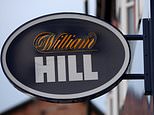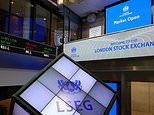Drax powers ahead with £2.3bn flotation
THE BIGGEST British company to float this year finally got to market today as the giant Drax power station shrugged off a host of international predators to list the business valued at £2.3bn on the Stock Exchange.
The one-time near-bankrupt Yorkshire power station, which has been in the hands of its lenders for the past two-and-a-half years, in effect swapped its debt mountain for shares today - a move that could see it go on the acquisition trail. Immediate speculation centres on British Energy's big coal- fired plant, Eggborough.
The float of Europe's largest coal-fired power station - Drax is capable of generating 4 gigawatts of electricity or 7% of the UK's annual consumption - also lands a massive £30m windfall to its chairman, Gordon Horsfield, a 59-year-old former PricewaterhouseCoopers insolvency partner brought in to save the company after the business's near-bankruptcy in 2003.
Drax restructured its balance sheet issuing more than 400m shares to value the company's equity at £1.8bn but keeping £500m of debt on its books.
It had announced its intention to float in the summer but then was assailed by three separate takeover offers.
The bids - from consortia separately led by UK-based group International Power, the Texas Pacific private equity group and a third private equity grouping backing Constellation Energy - were all rebuffed on valuation grounds.
Drax is a single business, generating power using so-called clean coal technology to burn up to 10m of tonnes of coal a year from its six units with their giant 800 ft tall cooling towers.
Chief executive Dorothy Thompson, 45, a former Powergen and Intergen executive, says confusion over UK government energy policy makes Drax as strategicially important as ever.
Analysts believe Drax may use its shares as currency to fund expansion or diversification. Drax's float comes as speculation increases that nuclear generator British Energy is developing discussions to sell its 2 gigawatt Eggborough-plant, its one non-nuclear asset. The recovery of Drax - just like that of British Energy, also rescued by a debt-for-equity refinancing - is down solely to the soaring electricity price.
It is a remarkable reversal in fortune for a business which lost £700m in 2002, brought to its knees by the energy crisis which bankrupted its single biggest customer TXU.
Drax has been through several hands since being built by the Central Electricity Generating Board. It was transferred to National Power at privatisation in 1990 which sold it to AES of the US for £1.86bn in 1998. AES quit the UK in 2003 leaving Drax in the hands of its lending banks.
Most watched Money videos
- Three fund ideas for investors to profit in a volatile 2025
- The new two-door two-seater Aston Martin Vantage Roadste
- Share picks for 2025: From Nvidia to a FTSE stalwart
- Famous 1986 Land Rover Defender advert that saw a car climb a dam
- 1987 Volkswagen advert champions the reliability of their cars
- Boreham Motorworks unveils the limited-edition Mk1 Ford Escort
- Mercedes-Benz launch wacky advert of a dancing chicken
- Relive the iconic Renault Megane advert from 2005
- Dean Dunham responds to a man who has rented council land since 1975
- Snoop Dogg in film announcing Publicis as largest advertising agency
- Jaguar targets new customers by ditching logo and going electric
- Toyota relaunches Urban Cruiser as an electric tech-rich crossover
-
 Oh for the days when a fish supper was 35p! As Rick Stein...
Oh for the days when a fish supper was 35p! As Rick Stein...
-
 FTSE 100 tops 8,500 to hit new record on hopes of rate...
FTSE 100 tops 8,500 to hit new record on hopes of rate...
-
 Cash Isa battle sees Trading 212 hike best rate TWICE in...
Cash Isa battle sees Trading 212 hike best rate TWICE in...
-
 Banks could offer more large mortgages as Labour urges...
Banks could offer more large mortgages as Labour urges...
-
 Backlash against Freetrade deal intensifies as chief...
Backlash against Freetrade deal intensifies as chief...
-
 Three fund ideas for 2025: Expert picks on bonds, US...
Three fund ideas for 2025: Expert picks on bonds, US...
-
 Chancellor urged to rule out fresh pension tax raid
Chancellor urged to rule out fresh pension tax raid
-
 Polestar 7 confirmed - and it'll be a premium compact SUV EV
Polestar 7 confirmed - and it'll be a premium compact SUV EV
-
 RAY MASSEY: Dacia finally reveals Bigster price range
RAY MASSEY: Dacia finally reveals Bigster price range
-
 Everyman suffers box office slump as Joker sequel...
Everyman suffers box office slump as Joker sequel...
-
 How much money are homeowners now making when they sell?...
How much money are homeowners now making when they sell?...
-
 William Hill owner Evoke on a roll as turnaround strategy...
William Hill owner Evoke on a roll as turnaround strategy...
-
 SMALL CAP MOVERS: Fiinu agrees AI deal with UK bank
SMALL CAP MOVERS: Fiinu agrees AI deal with UK bank
-
 DFS on track to double profits - but furniture demand...
DFS on track to double profits - but furniture demand...
-
 Rio Tinto talks with Glencore to trigger merger mania
Rio Tinto talks with Glencore to trigger merger mania
-
 MARKET REPORT: US activist investor takes pot shot at...
MARKET REPORT: US activist investor takes pot shot at...
-
 Goldman boss given £67m bonus to remain in role for five...
Goldman boss given £67m bonus to remain in role for five...
-
 ANNE ASHWORTH helps investors find find US stocks
ANNE ASHWORTH helps investors find find US stocks



























